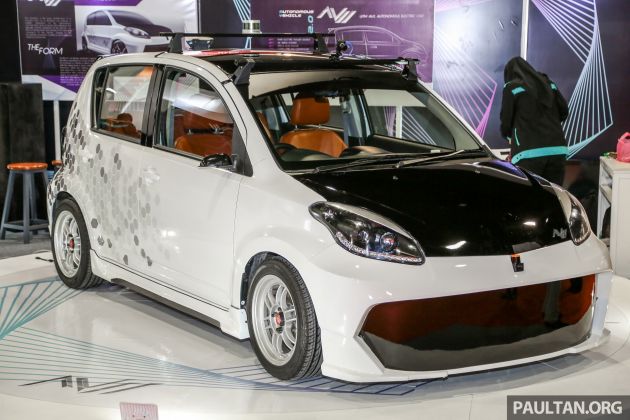The exterior may be very much that of a regular Perodua Myvi with some creative styling revisions, but what’s underneath the hood is anything but. This is the Urban Intelligent Mobile Autonomous Vehicle II, also known as AVII, a design study created by Universiti Teknologi Mara (UiTM) as a testbed for autonomous driving research.
The AVII is a collaboration between four faculties i(electrical engineering, mechanical engineering, art & design and computer and mathematical sciences), and is described as “a locally-developed and innovatively-pioneered futuristic autonomous electric vehicle, proficient in navigating long stretches of road with minimal human intervention.”
It boasts an array of autonomous drive equipment to help it achieve this goal. These include a Velodyne VLP-16 light detection and ranging (LIDAR) unit, which creates 360-degree 3D images through input from 16 laser/detector pairs.
Elsewhere, an inertial measurement unit helps determine the vehicle heading, while a Emlid GPS system provides the necessary positional awareness. There’s also a point-grey camera (for lane awareness), a laser range finder, ultrasonic sensor and a rotational encoder in the sensor kitbag. Autonomous capabilities include steering and throttle, path planning/navigation, lane detection as well as short to medium range object detection.
The AVII, which seats four and tips the scales at 1,000 kg, has been designed primarily for autonomous driving research, but there’s also a secondary exploration into electric mobility. Components include a five hp asynchronous 48 volt DC motor, which is juiced by a 8.1 kWh lead-acid battery unit.
Operating range is 50 km, and via a household 240V outlet and a built-in three-pin plug connection, the battery takes five hours to achieve a full charge. Maximum operating speed is 30 km/h, but the car has been programmed to a 25 km/h top speed.
Source: Read Full Article




